| CO-DIRECTORS |
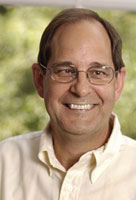 |
|
Ed Bouwer
Professor Bouwer has extensive experience with microbial process engineering and bioremediation processes. His group works on factors that influence biotransformation of contaminants, bioremediation for control of contaminated soils and groundwaters, biofilm kinetics, biological processes design in wastewater, industrial, and drinking water treatment, and transport and fate of microorganisms in porous media. A combination of laboratory and field measurements are used to better define the transport and fate of both organic and metal contaminants.
|
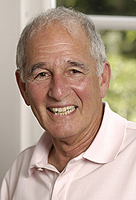 |
|
Erik Rifkin
Dr. Rifkin has coordinated and prepared environmental impact statements and ecological risk assessments for federal and state government agencies, corporations and NGOs. One of his primary interests is the characterization of human health and ecological risks resulting from exposure to contaminants in environmental media (e.g., aquatic ecosystems, sediments, soil and air). He has had considerable experience in communicating information on health risks and benefits to individuals in impacted communities.
|
|
AFFILIATED FACULTY
|
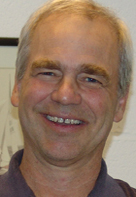 |
|
William Ball
Professor Ball is a professional environmental engineer with expertise in physical and chemical processes affecting pollutant fate and treatment, with particular emphasis on the fate of anthropogenic contaminants in aquatic environments and in engineered water treatment. He and his students use a combination of laboratory experiments, field experiments, and computer modeling to integrate chemical concepts of aqueous speciation, reaction, phase-partitioning, and adsorption with physical concepts of advection, diffusion, and interfacial mass transfer in complex natural and engineered systems.
|
|

|
|
Kai Loon Chen
Dr. Chen’s research focuses on Novel membranes, Membrane processes for water and wastewater treatment, Fate and transport of emerging nanomaterials, Environmental nanotechnology, and Environmental colloids and macromolecules.
|
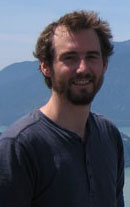 |
|
Ciaran Harman
Professor Ciaran’s research focuses on three interconnected themes related to understanding, representing and predicting the movement of water through the landscape: 1) Understanding the partitioning and transport of water along flow pathways within spatially (dis)connected landscape units, and developing novel ways to represent hydrologic dynamics at landscape scales. 2) Understanding the origins of spatially and temporally structured hydrologic behavior in the coupled co-evolution of hydrologic, geomorphic, soil and ecological systems, and 3) Understanding the effects of the legacy of human land use on the hydrologic behavior of restored ecosystems. His students use a combination of hydrologic and geomorphic modeling at a range of scales, field work in experimental watersheds, and comparative hydrology using multi-watershed databases.
|
|
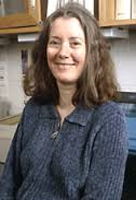
|
|
Lynn Roberts
Dr. Roberts’ research focuses on developing improved understandings of the mechanisms of abiotic transformations of halogenated organic pollutants, with an overarching goal of improving our ability to make accurate a priori predictions of the environmental fate of toxic organic compounds. Many abiotic transformations are important in their own right, and may dominate the natural attenuation of organic pollutants. A more detailed understanding of how structure influences reactivity in such reactions provides insight into analogous mechanisms of biologically-mediated transformations, and may provide insight into the features responsible for the toxicity of organic compounds. Under appropriate conditions, abiotic transformation reactions can be harnessed to effect removal of contaminants in groundwater, for example in iron-based permeable reactive barriers.
|
|
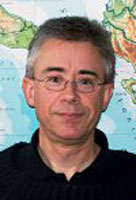
|
|
Alan Stone
Professor Stone investigates the kinetics and mechanisms of chemical reactions in aqueous media. He is especially interested in interactions between inorganic species (e.g. dissolved metal ions, oxyanions, mineral surfaces) and organic compounds. Structure-reactivity relationships developed in his research provide the basis for predicting contaminant behavior and contaminant persistence.
|
|
Mechanical Engineering
|
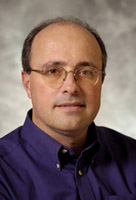 |
|
Charles Meneveau
Dr. Meneveau’s area of research is focused on understanding and modeling hydrodynamic turbulence, and complexity in fluid mechanics in general. Special emphasis is placed on the multiscale aspects of turbulence, using appropriate tools such as subgrid-scale modeling and Large Eddy Simulation. The insights that have emerged from Professor Meneveau’s work have led to new numerical models for Computational Fluid Dynamics and applications to model atmospheric dispersion of contaminants in complex urban environments using Large Eddy Simulation.
|
|
Chemistry
|
|
|
|

|
|
Howard Fairbrother (spectroscopy)
Dr. Fairbrother’s research focuses on surface chemistry, with an emphasis on the role of interfacial phenomena in (i) the deposition of nanostructured materials and (ii) the environmental fate and impact of carbon based nanomaterials in aquatic environments.
|
|
JHU Bloomberg School of Public Health
|
|
Environmental Health Engineering
|
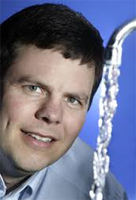 |
|
Kellogg J. Schwab
Dr. Schwab’s research focuses on environmental microbiology and engineering with an emphasis on the fate and transport of pathogenic microorganisms in water, food and the environment. This work includes extensive laboratory-based research designed to develop and evaluate molecular detection methods with subsequent application of these methods in field-based investigations. Data gathered during these studies are then integrated into exposure assessments for risk analysis and microbial risk assessment. In collaboration with the Centers for Disease Control and Prevention and state health laboratories Dr. Schwab has investigated numerous waterborne and foodborne outbreaks of viral gastroenteritis. Dr. Schwab’s current research projects involve improving environmental detection methods for noroviruses (the leading cause of non-bacterial gastroenteritis worldwide) by integrating quantitative reverse transcription-PCR, proteomics and pyrosequencing. He is also investigating how important human pathogens including noroviruses, hepatitis A virus, rotaviruses, Campylobacter, antibiotic resistant E. coli and enterococci, Cryptosporidium parvum, Toxoplasma gondii and molds such as Aspergillus persist and are transported through environmental media (water, air, and food). Applying classical and molecular diagnostic tools, he has developed and participated in multiple research projects designed to evaluate the public health impacts of improving water access and potable water quality and the effectiveness of point-of-use water treatment. His research group has also examined the health effects of inadequate management of human and animal waste with a focus on assessing the impact of concentrated animal feeding operations on human health, the environment and quality of life in the communities in which these operations are located. He continues to evaluate the impact of human pollution on urban streams and the Chesapeake Bay caused by aging and deteriorating distribution systems by combining microbial, chemical and geographic information system (GIS) data. Recent international work has focused on developing field-portable microbial and chemical laboratories. These self-contained labs facilitate evidence-based assessments of point of use and community level water treatment systems designed to provide potable water to individuals in low income countries including Nicaragua, Peru, Ghana and South Africa.
|
|
Daegu University, South Korea
|
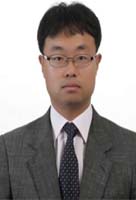 |
|
Yongseok Hong
Dr. Hong is specialized in studying environmental transformation and transport of mercury species, remediation of contaminated environments, and ecological risk assessment. For the studies, he employs bench-scale laboratory experiments and field-scale evaluations and prefers to use mathematical modeling to understand underlying processes and to develop effective strategies to mitigate environmental contamination. He also pursues the development and application of passive sampling techniques to monitor toxic contaminants and to study the speciation, bioavailability, and toxicity of the contaminants in aquatic environments.
|